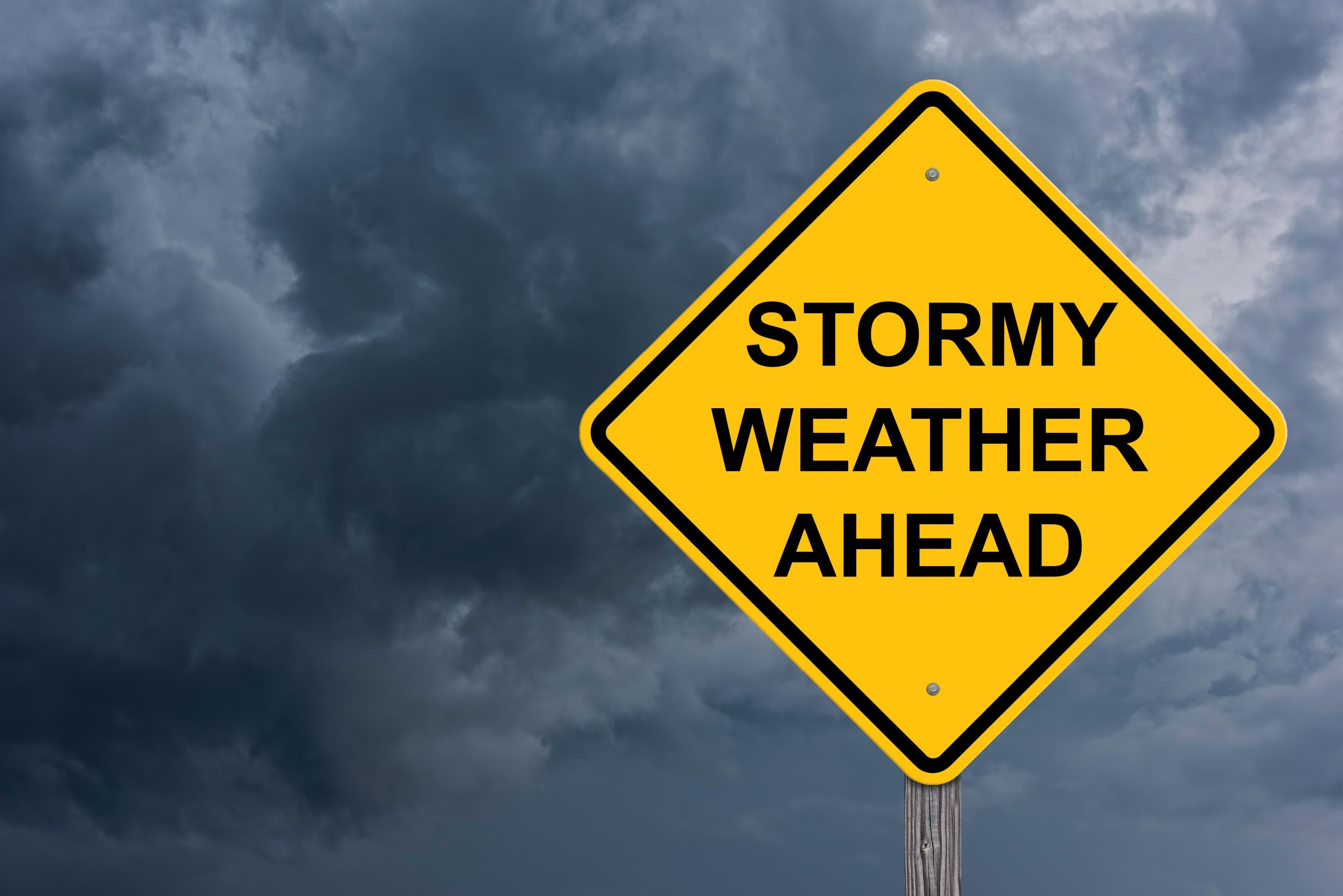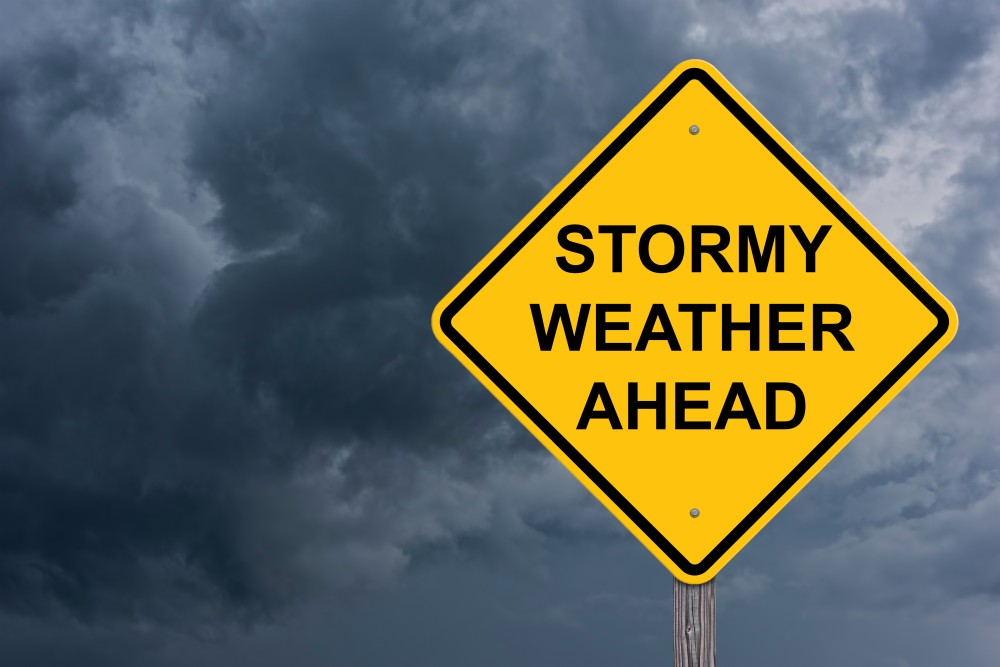Safe From the Storm: Building Your Business Resilience to Extreme Weather
September 4th, 2019

Companies have long engaged in risk assessment and mitigation as a core business practice. Among the most pressing of these risks is the unique threat of extreme weather events. As noted in a report by The Center for Climate and Energy Solutions, there are significant costs associated with these weather events. The National Oceanic and Atmospheric Association’s National Centers for Environmental Information tracks U.S. weather and climate events that have great economic and societal impacts. During 2017, the experienced a historic year of weather and climate disasters. The cumulative damage of these events is $306.2 billion, which shattered the previous annual record. The most destructive impact in those figures comes from the damage done by hurricanes.
Severe weather can strike any time, and often without warning, but through meteorological advancements, we often have some time to prepare for storms. Whether it’s a flood, hurricane, or winter storm, weather disasters can pose a number of challenges to your business. Extreme weather can close facilities, delay production, disrupt supply and distribution chains, raise operation and capital costs, and reduce demand. Extreme weather can also keep employees from getting to work, disrupt communication systems and threaten the availability of power and water supplies.
Despite the risks and warnings, many businesses often face natural disasters unprepared. This can lead to huge losses and a difficult recovery. Regardless of the storm, your goal is to keep your business operating while maintaining the safety of your employees and securing your facility. Here’s how to efficiently prepare your business for a storm:
Lightning
Your location and the type of building you occupy should be considered when assessing the threat of lightning to your business. Typical impacts to business would be due to an electrical surge or fire caused by a direct hit. According to the National Severe Storms Laboratory, skyscrapers are more likely to be struck by lightning, but even small or standalone buildings are at risk. Installing a lightning protection system device could create a safe path for a lightning bolt to reach the ground, preventing massive danger for your facility, customers and employees.
Hurricane
Unlike some other natural disasters, the onset of a hurricane is predictable and, as a result, lends itself to early preparations for minimizing its effect on a facility. Before hurricane force winds and associated storm surge flooding can damage industrial processes and cause uncontrolled releases of hazardous chemicals, business owners typically take prudent preventive action by safely shutting down processes (i.e., de-energize or isolate process equipment) or otherwise operate under emergency operations procedures.
For complex industrial processes, shutdown operations require special care beyond normal operations. Process shutdown often involves numerous simultaneous activities and rapidly changing process conditions. Normally automated systems or process controls may be bypassed, disconnected, or under manual control. Of particular concern are the hazards associated with the additional human/process interactions required during shutdown operations, as process parameters may be in unusual ranges and operators may have less experience controlling plant conditions during a shutdown.
Owners and operators should operate and maintain safe facilities at all times, even during emergencies. The Environmental Protective Agency (EPA) encourages all industry sectors to review their operational events during shutdown operations related to previous hazardous weather events, and make appropriate administrative/procedural, operational/process equipment and hardware/software safety improvements. It is not uncommon for facilities to deviate from permit conditions during an emergency. Most permits have conditions that require you to report these deviations so be familiar with those conditions before an emergency strikes.
Storm surge, coastal erosion and inland flooding are among the most dangerous natural hazards unleashed by hurricanes, with the capacity to destroy homes and businesses, wipe out roads, bridges, water and sewer systems, and profoundly alter landscapes.
As stated by Brian McCallum a USGS expert based in Atlanta, who monitored storm tides for Hurricanes Matthew and Irma, “The U.S. Geological Survey (USGS) has experts on these hazards, computer models for forecasting them, and sophisticated equipment for monitoring actual flood and tide conditions. We use this information to inform key decision-makers about the storm in order to help them determine the best course of action for affected communities.”
The North Carolina Department of Environmental Quality reminded its manufacturers and other businesses with large storage needs of important tips for managing underground storage tanks (USTs) in preparation for Hurricane Florence. Important tasks such as completing inventory reports and leak detection reports become even more important when managing an impending hurricane in order to determine if there was product loss from the UST system or if water had entered the system, which would have to be reported and investigated. Some UST guidelines for preparation and recovery include turning off electricity, weighing down the tank and checking everything thoroughly after the storm for any damage.
Flood
Even if your property has never been impacted by a flood, be prepared! Changing weather patterns and increased development has affected areal flooding.
Whether or not your business is situated in a flood-prone area, your first step in preparation should be to create an emergency plan. Your primary concern is to secure your supplies and facilities, including all documents and records. Follow media reports regarding the storm and start preparing your facility. Check for gaping holes in your roofs, having repairs completed or installing roof tarps to help prevent leaks. Be sure to position your equipment and supplies to an elevated area or relocate them to a safer place or warehouse. Because flooding can quickly make roads impassable, determine which roads can provide you and your employees safe routes away from danger and share that evacuation route.
Storm surge, coastal erosion and inland flooding are among the most dangerous natural hazards unleashed by hurricanes, with the capacity to destroy homes and businesses, wipe out roads, bridges, water and sewer systems, and profoundly alter landscapes.
Preparation and Recovery
In all cases, consider remote collaboration with your staff so you can continue operating even during a natural disaster. If there's a need for certain people to stay on site, make sure they have sufficient supplies, including food, water, blankets, flashlights, and batteries. Also, find alternate suppliers/vendors in case a disaster hampers delivery on either their end or yours. After the disaster, huddle with your team to talk about your recovery plan, and, at the same time, review your current disaster preparation program to know how it can be improved in the future.
The EPA recommends that emergency contact information should be updated and reported to Local Emergency Planning Committees (LEPCs) on a continual basis for local response purposes. Also, owners/operators should consider the operability issues for land based or cell phone services during hazardous weather events. If the probability of operational failure is high, emergency contact numbers should be satellite service based.
“Companies should be prepared for many of your team members to not be available due to attending to family and personal property concerns during these weather events, and emergency action teams with identified critical roles and a depth chart of several backups is key,” suggests Patrick Krechowski of Jimerson Birr, P.A., a full service business law firm based in Florida.
As recommended by the Environmental Law Institute, companies need to manage risks to their facilities and supply and distribution chains, but they also need governments to invest in strengthening resilience of public infrastructure and why voluntary public-private partnerships are needed to bring together government and business expertise who can develop and improve resilience planning.
Another essential, but often overlooked component of a natural disaster incident is the safe, proper and timely management of debris. According to the EPA, debris management is also one of many competing priorities agencies must manage during such events. It is important that disaster debris be properly managed so as to protect human health, comply with regulations, conserve disposal capacity, reduce injuries, and minimize or prevent environmental impacts. It involves advance thought, planning and coordination among individuals at various levels of government and the private sector with experience and expertise in waste management.
The impact of natural disasters on your business can be catastrophic. Depending on your type of business, identify the risks associated with natural disasters, lay out evacuation and relocation plans, secure your equipment and facilities, and most importantly, take care of your workforce. While you cannot fully protect your business against these adversities, you can minimize the risk and damage to your building, equipment, and personnel by planning and preparing ahead.
Jackie Baxley, PE, Corporate Director of EHS at HRP Associates, Inc.
Jesse Zahn, PG, CHMM, New York Regional Manager at HRP Associates, Inc.
Jacob Smith, CIH, Project Manager at HRP Associates, Inc.








